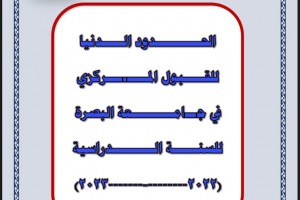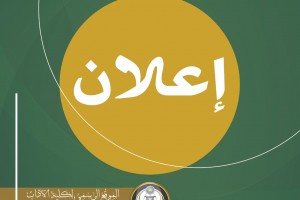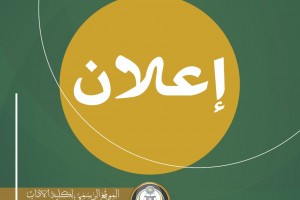

- Stories of the Beginnings of Translation: importance from a historical aspect
One of these stories is the one in the Book of Genesis which is Tower of Babel. The story says that God created all humans who inhabited the Iraqi city Babel. One day, Babylonians decided to build a great city of a tower reaching the sky to glorify themselves and prevent being scattered. But as stated in the story, God felt a threat for his power and decided to punish the Babylonians. Thus he landed to the city and said to the angels "Look, they are united and they speak the same language". God also knew that the Babylonians in their act will not be unable to do anything in future, thus he decided to confuse them by using different languages and scattering them in the rest places of the earth. Thus the Babylonians who became multilingual needed translation since that immemorial age. This biblical text contradicts with the Quranic text which says '…………..". so, the issue of different tongues is a sign of power and thus it is planned and managed by God and not an accidental act, as mentioned in the Biblical story. The biblical tale may have happened but the divine planning and intention remains according to the Quranic text. One of the translation stories is that of Rasheed's stone which was issued with a decree in Memphis in Egypt in 196 BC written in hieroglyphic, hieratic and ancient Greek. This was discovered in Rasheed's village in Delta Egypt in 1799 by one of Bonaparte's campaign soldiers. While in Iraq, it is said that the king Sargon of Akkad announced about his victories in clay tablets in the Sumerian and Akkadian languages by using cuneiform symbols. In Persia, there was Behistun inscription written in three languages: ancient Persian, Babylonian and the Elamite. He narrated the King Darius' victories.
- The true roots of the translator stems from his love for watching foreign movies such as "the Godfather", "All is Quiet on the Western Front", :Amadeus", and the foreign series such as "The Roots", " Planet of the Apes", and " Beauty and the Beast". In addition, he can learn from beautiful blondes and heroes in western movies and series, the picturesque views and the lyrics of singers' songs such as Demis Roussos, Paul Anka, Abba, and Elton John. He can benefit from the desire of learning a foreign language and bragging on peers and out of the desire to help others in different life circumstances where the foreign language prevails. The initiation of learning a foreign language and translation might lie in the desire to know the other "the foe", which is exemplified in the Prophet Mohammed's (PBUH) saying: learning a nation's language is a protection of their evil". Finally, I recall what is written in "The Tongue-Tied American: Confronting the Foreign Language Crisis" by Paul Simon talking about the damages and the expensive prices for the monolingual Americans and their culture, the Soviet delegation outperforming its American counterpart in the disarmament talks because the Soviet were excellent in English. They already understood what the Americans were saying before the translator rendered the American views into Russian. This process gave the Russian an advantage in crystallizing their response, unlike the Americans who did not know Russian.
- Practicing Translation
Translation practicing is an old issue as it is obvious in the Biblical story regarding the start of translation in Babylon. However, studying translation as an academic and scientific one did not start till the second part of the 20th century. One can say that what we have of previous studies, opinions and theories of translation related to the second half of the 2oth century could not accept the current standards in the academic and scientific research. They were mere prefaces written by translators reflecting upon their methods in translation or just brotherly writing in which a colleague was being praised for his works in poetry. But these unscientific and non- academic writings were effective and highly argumentative in relation to translation such as Cicero who said in his translation for two of Athens orators:
I did not translate these as translators but an orator keeping their ideas and forms untouched or just the saying of one of the thought symbols in a language that matches our usages. By so doing, I did not consider it necessary to translate word for word but maintain the general style and the power of language.
In this regard, St. Jerome said: now I not only confess but also frankly declare that in my renderings from Greek, except the Bible which contains lots of ambiguity, I translated not via word for word but sense for sense.
These non-academic thoughts and "theories" developed through Martin Luther's translation of the Bible into German using slang putting into consideration that:
You have to ask the woman in her house or the kids in the street or the ordinary man in the market and observe their mouths and how they speak, and in this way you can head on translating. By so doing they will understand and see that you talk to them using German.
From Luther to the English poet John Dryden who classified translation into three types:
- Translating word by word and line by line equivalent to literal translation and he called it metaphrase. Dryden sees translation as dancing on ropes, which is a stupid task.
- Translating via a horizon where a translator follows the source text, maintaining its meaning and not its words. This semantic type of translation equals paraphrase.
- Imitation means leaving the words and the senses, which equals Abraham Cowley's free method in translation which is a translation with modification.
We proceed to the first martyr in translation. He is the French Etienne Dolet who was condemned by the College of Theology at the Sorbonne due to his adding of two or three words in his translation (rien du tout) for one of Plato's dialogues and being accused of using blasphemy. So, he was executed by burning him. In 1540, Dolet offered us an essay title d" The New path of translation from another Language". He put five principles:
- A translator must realize the meaning of the source text and its spirit and if he is free to disambiguate the text.
- A translator should be bilingual.
- A translator should avoid literal translation.
- A translator should use common forms.
- A translator should select the words and arrange them in awa y suitable to produce the right rhythm.
After Dolet, in 1790 Alexander Fraser Tytler wrote an essay titled "An Essay on the Principles of Translation" establishing three conditions for translation that are of no big difference from those of Dolet. These are:
- A translator should fully represent the 1) ideas and
- style of the original and should
- possess the ease of original composition.
Then, Friedrich Schleiermacher offered the two methods of naturalizing and alienating which were later converted by Venuti into domestication and foreignization. Schleiermacher sees that a translator has two options: either to leave the author in peace and moves the reader towards the author or to leave the reader in peace and moves the author towards the reader. Thus, we have established the bases of theoretical writings on translation in the periods preceding the twentieth century.



.jpeg)



